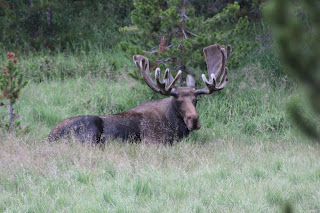The past two weeks have been exciting but exhausting also. I had my largest show of the year in Loveland, Colorado, the Loveland Sculpture Invitational and a new show the 17th Street Art Festival in Cheyenne, Wyoming.
 |
| 17th Street Art Festival |
This particular view is of the set up I had in Cheyenne, Wy. this past weekend. I attempt to draw viewers in by working live on a pedestal in the center of the 10 x 10 area.
You notice that I placed a large piece that drew a lot of attention in one corner at the front and another large piece at the far opposite corner in the back.
I do take a few extra pieces in order to not have an empty pedestal when one sells.
 |
| Loveland Sculpture Invitational |
This is a view of the set up I had with the same 10 x 10 space at the Loveland Sculpture Invitational in Loveland, Colorado.
This gives a better view of how I played with the area, giving room for the patron to browse and make a circle of the entire area.
The two uses of the space allowed one to browse entirely on the outside in Cheyenne and to enter the space in Loveland.
Often you will show in different spaces, one allowing people all around you the other only allowing people to see you from the front and enter from the front (you have other artist butting up against you on either side.
 |
| I haul 12 or more pedestals to shows in order to get the look I want |
This shows how I haul pedestals and in the case of the Loveland show we hauled also an atv on a flatbed to unload on the premises and hook up to the flatbed unload the pedestals and load the work (hauled both in the truck and my car) in order that we could pull onto the show grounds going from parking lot to 10 x 10 space where they did not allow vehicles.
If only I could get enough courage to drive the atv up in the pickup and use the trailer as already loaded with pedestals it would not take me so long to set up.
Yes, I realize that I could bust out the glass in the back window or roll over myself off the back so I doubt it will happen anytime soon...only in my dreams.
Each show is different and each time you may set up your space differently to allow the best view and traffic. I have exhibited in the center using two C shapes to each side with me in between allowing viewers from each side to view as they are circling tent.
I have learned over the years to allow patrons to look uninterrupted and if they are interested in a particular piece or want to strike up a conversation they will...you just have to be attentive and friendly, connect them with a piece they may be admiring by telling a story about that particular piece. Give it life and personality in their view. Otherwise you will constantly be scaring off people by trying to entertain them or carry on a conversation when all they want to do is look.
I had a great time and made new friends (both fellow artist and patrons). Had return patrons and gave them a percentage on another purchase...this is how you develop as an artist...produce and market, you can not do one without the need of the other.
































